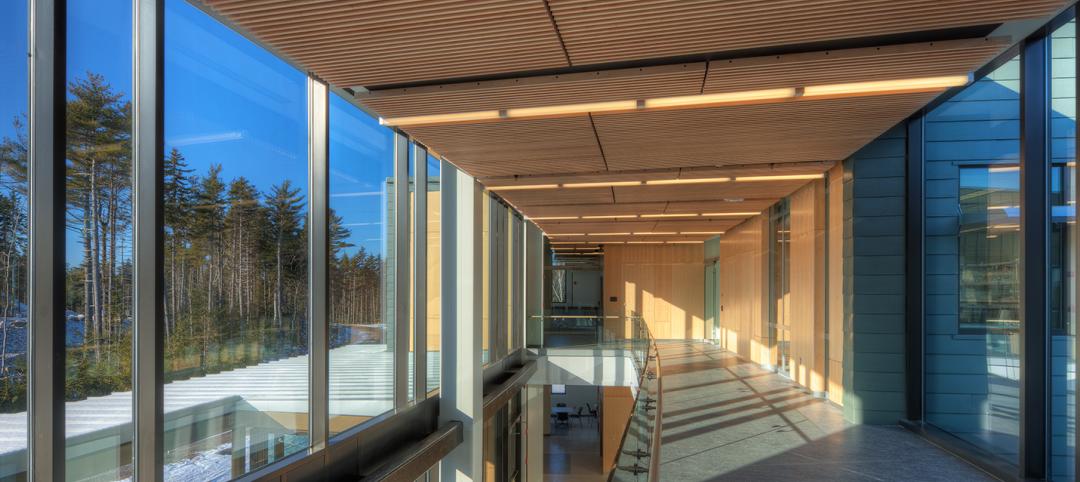 |
| Only 20 geothermal boreholes were drilled at the WestJet complex because a majority of the piping was embedded in the building’s structural piles. |
19. Hybrid Geothermal Technology
 |
20. Kinetic Road Plates Power Purchases
 |
| Graduate student Shawn Shields checks server performance while Dr. Yogendra Joshi looks on at Georgia Tech’s simulated data center. |
21. Cutting the Cooling Load of Data Centers by 15%
Researchers at the Georgia Institute of Technology, Atlanta, are using a 1,100-sf simulated data center to develop and evaluate new ways of controlling heat in commercial data centers, one of the fastest-growing building types in the country. The researchers, led by Professor Yogendra Joshi of the Woodruff School of Mechanical Engineering, have found ways to cut energy center cooling costs 15% by rearranging servers and space for optimal airflow patterns. Their simulated data center uses several different cooling systems, partitions to change room air volumes, sophisticated thermometers attached directly to a server's motherboard, and both real and simulated airflow sensors to measure the output of fans and other systems. The research is sponsored by the U.S. Office of Naval Research and the Consortium for Energy Efficient Thermal Management.
Related Stories
| Feb 27, 2012
Consigli complete first building for Bigelow Ocean Sciences Campus
Designed by WBRC Architects Engineers in association with Perkins + Will.
| Feb 22, 2012
Siemens earns LEED certification for Maryland office
The Beltsville facility, which also earned the ENERGY STAR Label for energy performance, implemented a range of energy efficiency, water conservation and sustainable operations measures as part of the certification process.
| Feb 22, 2012
CISCO recognizes Gilbane for quality construction, design, and safety
The project employed more than 2,000 tradespeople for a total of 2.1 million hours worked – all without a single lost-time accident.
| Feb 17, 2012
Tremco Inc. headquarters achieves LEED Gold certification
Changes were so extensive that the certification is for new construction and not for renovation; officially, the building is LEED-NC.
| Feb 15, 2012
Code allowance offers retailers and commercial building owners increased energy savings and reduced construction costs
Specifying air curtains as energy-saving, cost-cutting alternatives to vestibules in 3,000-square-foot buildings and larger has been a recent trend among consulting engineers and architects.
| Feb 13, 2012
WHR Architects renovation of Morristown Memorial Hospital Simon Level 5 awarded LEED Gold
Located in the Simon Building, which serves as the main entrance leading into the Morristown Memorial Hospital campus, the project comprises three patient room wings connected by a centralized nursing station and elevator lobby.
| Feb 8, 2012
World’s tallest solar PV-installation
The solar array is at the elevation of 737 feet, making the building the tallest in the world with a solar PV-installation on its roof.
| Feb 6, 2012
Siemens gifts Worcester Polytechnic Institute $100,000 for fire protection lab renovation
Siemens support is earmarked for the school’s Fire Protection Engineering Lab, a facility that has been forwarding engineering and other advanced degrees, graduating fire protection engineers since 1979.
| Feb 2, 2012
Call for Entries: 2012 Building Team Awards. Deadline March 2, 2012
Winning projects will be featured in the May issue of BD+C.
| Feb 1, 2012
‘Augmented reality’ comes to the job site
A new software tool derived from virtual reality is helping Building Teams use the power of BIM models more effectively.















